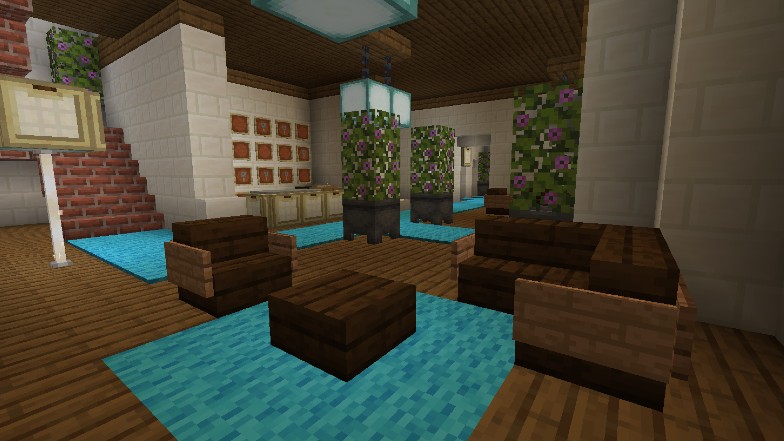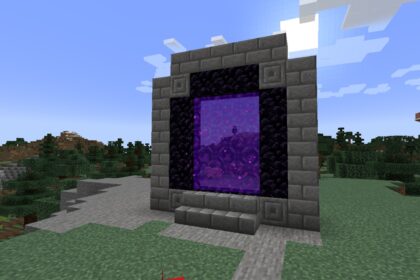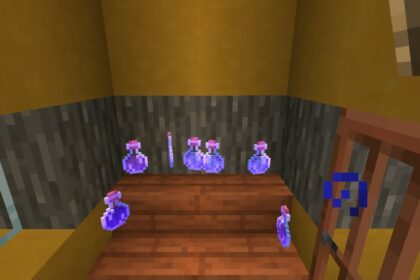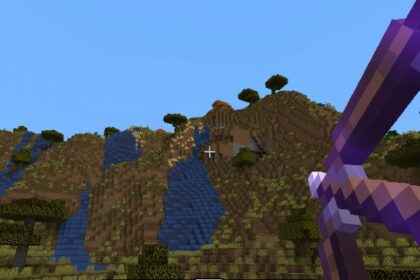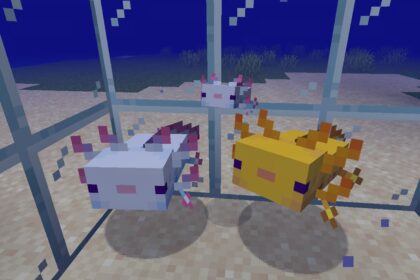Minecraft Villages are always a joy to find while exploring the Overworld. They are a good source of some basic loot, but you can also interact with the Villagers and trade with them.
Though, most of all, Villages are really nice to see as part of the landscape. Some Villages simply fit in with their environment that at a time it is a shame to take them apart for material and Loot.
So why not build your very own Village?
Getting Started – Planning Phase
Before you start building your village, you should probably take a moment to plan it out a bit. Even a small Village could end up becoming a big build, especially if you want to make something that’ll impress others.
First of all, consider a layout.
Every village has space for houses and buildings, decorating, as well as paths that go between them and lead to them. A planned layout, using placeholders to decide where things will go, can help you visualize.
Not only that but you can save yourself any possible future hiccups you can make while building: Buildings too close together or paths looking too awkward.
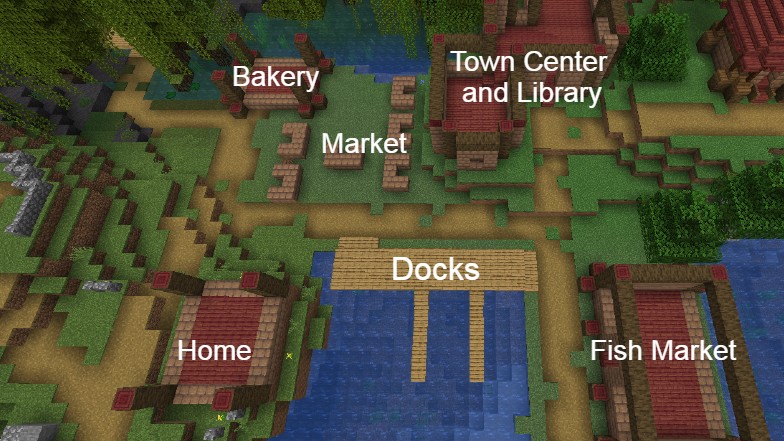
Pick a style. A Village is a number of similar smaller builds put together. Try planning out what kind of materials and shapes you will use while making the buildings and homes.
Choose things that you think look well together. Make sure to add enough variation so that the buildings don’t all look completely identical. My personal suggestion is the “Rule of 2+1”: 2 main colors and materials you alternate between with a single accent color you add a splash of in areas.
You can add one more material or color if they are relatively close and fit in the palette.
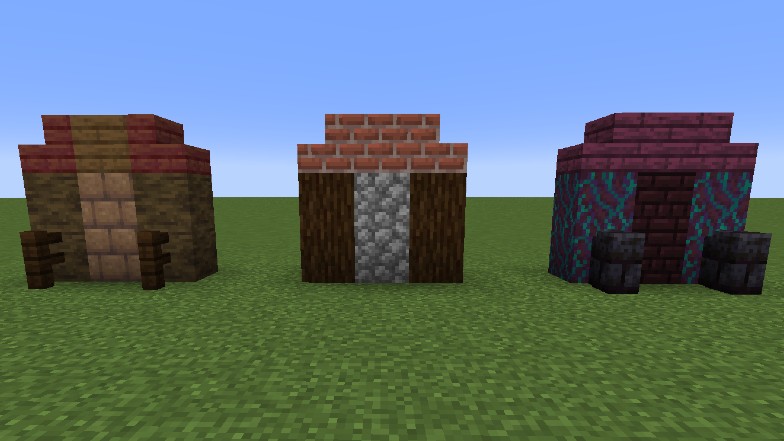
A style is also important for the village. Will you try and copy Vanilla Minecraft villages or perhaps make a full medieval build? Or perhaps something futuristic, East Asian, or Middle Eastern?
Look at real life for some inspiration.
Housing Villagers
Even if you build a village from the ground up, you can include Villagers in your build and have them live and work inside your village. Though, it is important to mention that Villagers need to have certain requirements met in order to be able to live and multiply in your village.
The first thing is that each Villager needs their own Bed. It is recommended that the Beds are placed inside an actual home so that the Villagers can remain safe during night time.
Having more vacant Beds is one of the requirements for Villagers to breed. They will also need a sufficient amount of food: 3 Bread or 12 of any vegetable (excluding Pumpkin or Watermelon) in their inventory.

Each Villager can also have a profession if they have a claimed Bed and an appropriate work station. Different work stations grant different professions.
Including Composters, Fletching Tables, Barrels, Brewing Stands, and other will allow you to have a fully functioning Village.
Do keep in mind that if you have Villagers you can trigger a Raid inside the area if you have the Bad Omen effect on you. If you accidentally acquire this status effect you will have to remove the Bad Omen before returning to your village.
Buildings
Homes aren’t the only kinds of buildings that can be found in a Village. There are all sorts of community buildings to include, both for aesthetic reasons and as a place for your Villagers to work in.
Some of the basic buildings you can include are:
- Shop
- Open Market
- Town Hall / Castle
- Pub / Restaurant
- Bakery
- Blacksmith
- Church
- Library
If you have a number of community buildings or areas it is good to keep them clustered together.
If your town hall is the center of your Village, you can have the church or library relatively close to it as these would be places where people gather. The open market or shops can be pretty close by, with a few houses in between.
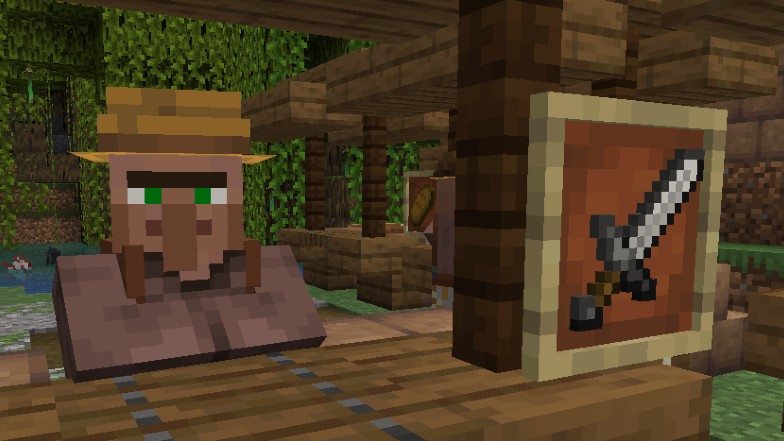
Industrial types of buildings such as farms, blacksmiths, or even fisheries are better placed at the edges of a village.
Most homes you will find further away from the center, usually close together in neighborhoods. The farther they are from the center the smaller they would be, while the ones closer can be bigger and fancier.
If you wish to build a particularly large Village you can even separate everything into different “districts”. A farming district on the edge of town, with an industrial and housing district following after it closer to the center.
Homes And Decoration
Not every Villager home has to look identical. Do not be afraid of changing the homes up as you go along.
Change up their size. Homes closer to the outskirts of a village would often be smaller, particularly homes around farms. A smaller home with a bigger yard area or a whole Wheat field makes sense.
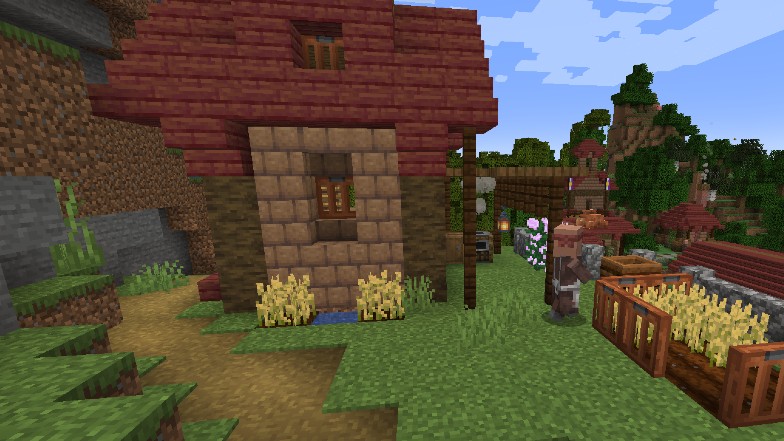
The homes around your town hall or church would be larger. Making multiple story buildings can make the whole place feel bigger and more alive.
Through the houses and decoration you can even tell the story of your town. A tall clean looking building may appear to be owned by somebody rich and respected in town, compared to a run down and foliage covered house in the outskirts.

Street lights and flowers along the paths are a must. Where you can think of including benches where people could rest. You can build all kinds of furniture inside the homes, but also outdoors.
Don’t forget to also make a flag for your village using Banners.
Building Tips
It is very easy to get absolutely lost while doing a bigger build like this. So allow me to give you some of my personal tips when doing villages.
- Outline your buildings. If you are already following a layout for your village, I would also suggest doing an outline of your buildings. These are not meant to decide the exact shape and size of your building.
The outer lines of an outline is where the farthest part of a building may reach, whether this be its yard or roof. This will save you time in the future and prevent buildings being in the way of each other. - Stick to a pallete. In Vanilla Minecraft each Village has a pallete: Savanna, Desert, Spruce, etc. The building walls are all made from the same material and the roofs are made from the same kind of wood.
Even if your design varies in areas, the palette will help keep it all together. - Step out of your comfort zone. Often when you figure out a house design you like, you will be tempted to copy it for every house. Don’t be afraid to add small variations from house to house.
One of them can have a yard, another just a terrace. Give one a chimney on the roof, while another can have a window with an attic. Small changes help you understand your style so that you can carry it on to other buildings. - Remodel an existing village. If making your own design is too hard, it can be just as fun going into an already existing Village and completely renovating it in your own way. Change its palette, add details, expand homes and add new ones.
- Use the clone command. When working on a bigger project using the clone command can be an absolute time saver. It will allow you not just to clone buildings, but even whole chunks of landscape if you wish to replicate it anywhere.
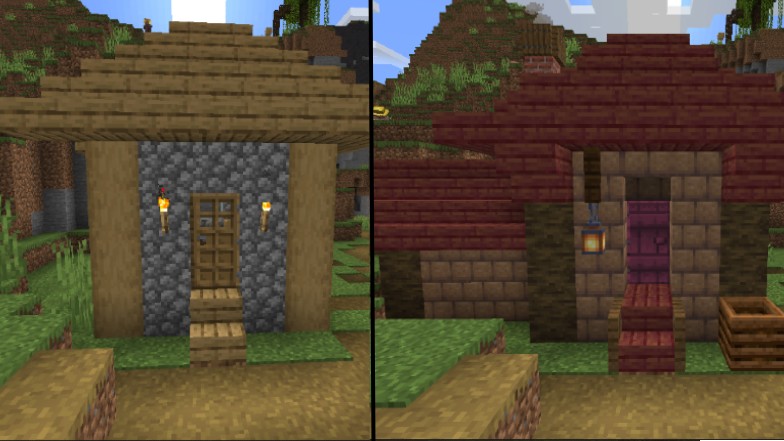
Need some place where your friends can stay? Then a hotel is just what you need to give them a warm welcome in your village.
We have a great article to give you some extra inspiration and get you really going.
